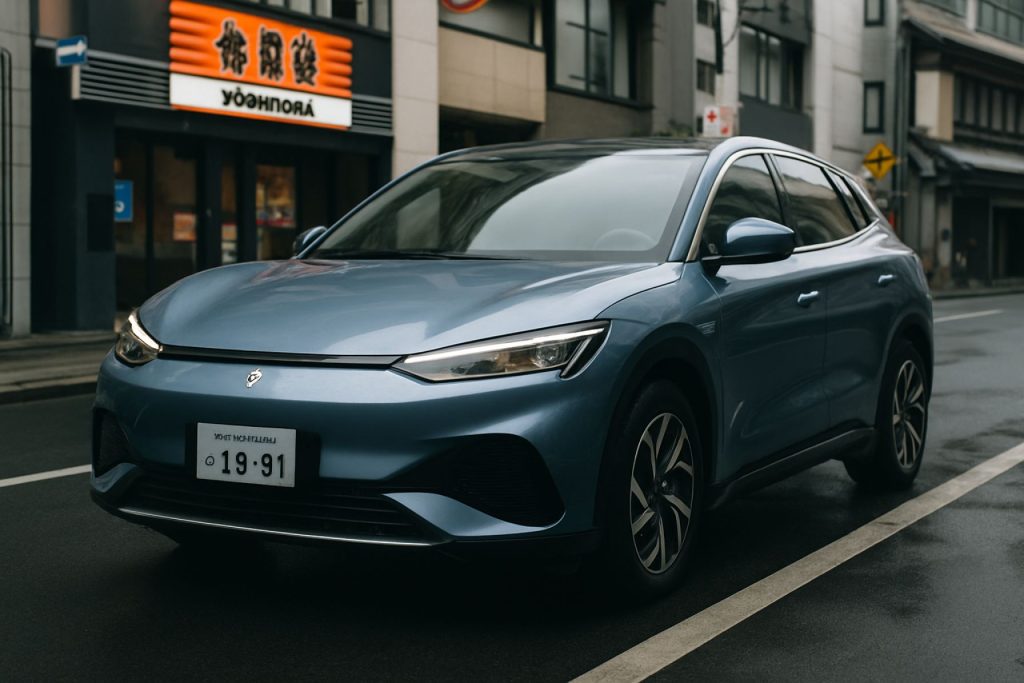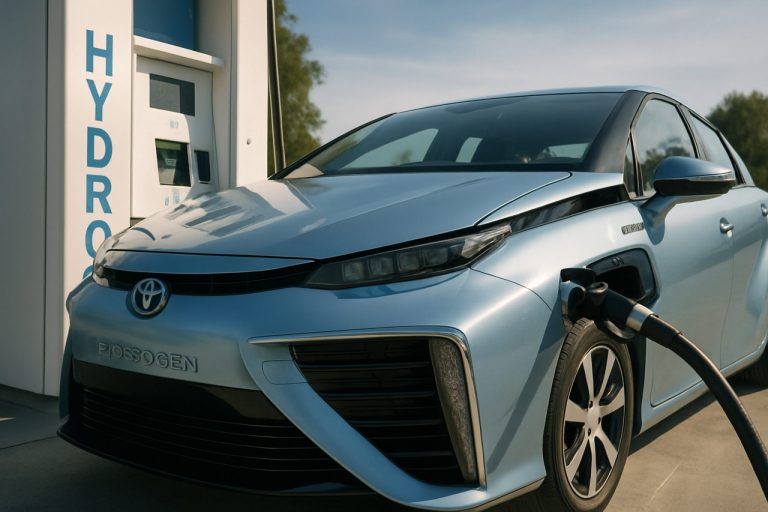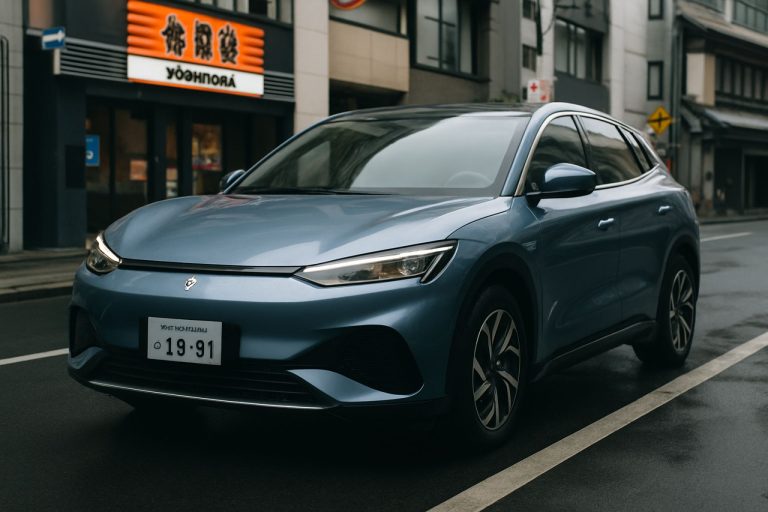
- BYD, a leading Chinese automaker, plans to launch a compact electric kei car specifically designed for Japan in late 2026.
- BYD emphasizes understanding Japanese preferences and integrating advanced EV technology to appeal to local consumers.
- The new model aims to compete with popular Japanese kei EVs like Nissan Sakura, Mitsubishi eK Cross EV, and Honda N-VAN e:, focusing on quality rather than low prices.
- The vehicle is expected to feature BYD’s innovative lithium iron phosphate battery, promising strong range and rapid charging.
- BYD’s entry brings new competition to Japan’s compact EV market, challenging established domestic brands and expanding choices for consumers.
A flurry of excitement pulses through Tokyo’s auto industry: one of China’s most formidable automakers, BYD, prepares to unleash a revolutionary compact electric vehicle tailor-made for Japanese streets. Early whispers suggest the company’s newest “kei” car will debut in late 2026. But with Japan’s tight market and legendary loyalty to homegrown brands, industry watchers are already asking: what will it take to win hearts from Hokkaido to Kyushu?
The answer, BYD signals, is a keen understanding of both Japanese sensibilities and the meticulous standards of BYD’s own battery technology empire. Unlike many foreign brands that have stumbled in Japan’s labyrinthine automotive sector, BYD strategists are working to blend respect for the nation’s beloved kei-car formula with the disruptive promise of their world-renowned EV prowess.
Japan’s kei cars—diminutive in size but mighty in influence—dominate city streets and rural lanes alike. Their appeal is tangible: fuel-efficient, easy to park, and taxed at a gentle rate. Recent years have seen an electrification of this segment, with Nissan’s Sakura and Mitsubishi’s eK Cross EV setting the pace. Honda, too, has entered the fray with the N-VAN e:, a nod to consumers’ hunger for greener choices without sacrificing daily utility.
BYD’s upcoming compact, insiders suggest, will not try to undercut established names in a race to the bottom. The Chinese automaker is refusing to “sell cheap” in Japan—an overture to the country’s renowned focus on quality and technological innovation. Executives have pointed out that modern consumers, especially younger generations, evaluate products on merit and performance, not origin. In this climate, the BYD EV will strive to stand shoulder to shoulder with its Japanese counterparts, likely targeting the 2.5 million yen price bracket that competitors have marked as the sweet spot.
A key wildcard in BYD’s hand is its battery expertise. The company’s affordable mainland China model, the Seagull (“海鷗”), has dazzled with innovative lithium iron phosphate cells and impressive efficiency. While BYD remains tight-lipped about how much of the Seagull’s DNA will make the leap to Japan, the automaker’s track record suggests the new kei EV will offer both competitive range and quick charging—two pillars of modern EV convenience.
Already, global EV markets tremble at BYD’s rise. The company has outrun Volkswagen and nips at Tesla’s heels in many metrics. Its expansion into Japan is more than a business move; it’s a cultural test of whether global players can thrive on home ground where Suzuki, Daihatsu, and Honda command nearly mythical status.
The takeaway? The race for Japan’s compact EV crown is heating up. With BYD’s entry, choices for consumers may grow richer, and the established order faces a fresh challenge. For Japanese drivers, the road to the future could soon be powered by new energy—and new ideas from across the sea.
BYD Sets Sights on Japan: Will Its EV Expertise Shake Up the Kei Car Market?
BYD’s Ambitious Push Into Japan’s Kei EV Segment: More Than Meets the Eye
As China’s electric vehicle (EV) juggernaut BYD gears up to introduce a compact electric “kei” car tailor-made for Japan, the auto industry is abuzz with speculation—and plenty of unanswered questions. Here, we reveal crucial background, trends, and expert insights that unlock a clearer picture of what BYD’s 2026 entry means for Japanese drivers, competitors, and the broader EV landscape.
—
Additional, Must-Know Facts
1. Understanding the Japanese Kei Car Segment
– Regulatory Restrictions: Kei cars are subject to rigorous government standards: maximum engine capacity of 660cc (for combustion) or strict power output caps for EVs, exterior length up to 3.4 meters, and width up to 1.48 meters (see Ministry of Land, Infrastructure, Transport and Tourism).
– Incentives: Owners benefit from significantly reduced taxes, insurance premiums, and registration fees, making kei cars enduringly popular in both urban and rural regions.
– Market Dominance: Kei cars represent around one-third of all new cars sold annually in Japan, with over 1.5 million units registered in 2023 (source: Japan Automobile Manufacturers Association).
2. BYD’s Battery Leadership
– LFP Battery Technology: BYD’s lithium iron phosphate (LFP) “Blade” battery is renowned for higher safety, longer cycle life, and reduced cost compared to rival chemistries. This tech underpins BYD’s massive success in China and beyond ([BYD](https://www.byd.com)).
– Vertical Integration: Unlike most rivals, BYD produces its batteries in-house, boosting quality control and lowering costs—a compelling advantage for scaling EV production.
3. Real-World Comparisons & Reviews
– Nissan Sakura vs. BYD Seagull (China): Nissan’s Sakura dominates Japanese EV kei sales with a range of 180km (WLTC), while BYD’s China-market Seagull boasts 305-405km (China CLTC) on a single charge and rapid charging from 30% to 80% in 30 minutes (Autocar, InsideEVs).
– Price Points: The Nissan Sakura starts at around 2.4 million yen (~$17,000 USD). Reports suggest BYD will match or slightly exceed this for a premium, tech-focused appeal.
4. Market Forecasts & Trends
– Rapid Electrification: By 2030, up to 60% of kei cars are expected to be electrified in Japan, with major OEMs accelerating EV launches to comply with anticipated “Green Growth” government mandates (Nikkei Asia).
– Foreign Entrants Face Hurdles: Brands like Volkswagen and Tesla have struggled to establish footholds in Japan, largely due to brand loyalty, aftersales expectations, and the unique kei format.
5. Security, Sustainability & Limitations
– Supply Chain Resilience: BYD’s recent expansion of battery giga-factories across Asia minimizes supply disruptions.
– Recycling Commitment: BYD invests in battery recycling to address end-of-life waste—a growing concern as EV adoption accelerates.
– Infrastructure Challenge: Japan’s public EV charging is less dense than China’s, potentially impacting customer experience unless BYD partners with local utilities.
6. Controversies & Consumer Perceptions
– Brand Trust: Consumer surveys indicate lingering skepticism of non-Japanese automakers, especially toward Chinese brands, despite rising interest among younger, tech-savvy buyers (Statista, 2024).
– Data Security: BYD must reassure customers over privacy and cybersecurity—areas under scrutiny worldwide as cars become more connected.
—
Top Pressing Questions, Credible Answers
Q: Will BYD’s kei EV threaten top Japanese brands?
A: If BYD delivers on quality, range, and price while excelling in local aftersales support, it may capture market share—especially among urban millennials valuing tech, sustainability, and cost-efficient commuting. Established leaders (Nissan, Honda, Suzuki) won’t lose their edge overnight, but disruption seems likely (Car and Driver, Reuters).
Q: What are BYD’s major features and expected specs?
– Battery: ~30-40 kWh LFP Blade battery (est.), with up to 350km range (WLTC) and fast DC charging.
– Dimensions: Kei conforming—around 3.4m long, 1.5m wide.
– Connectivity: Integration with mobile apps, advanced driver-assist, and infotainment on par with Japan’s best.
– Safety: 6+ airbags, ADAS features, likely 5-star JNCAP rating.
– Pricing: ~2.5 million yen (~$17,000 USD, before incentives).
Q: How can BYD win over Japanese buyers?
– Bring dealership and service centers local (potential tie-ups with Japanese partners).
– Highlight battery safety, cost savings, and eco credentials.
– Play up tech features and design influenced by Japanese tastes.
– Aggressively market warranty length and maintenance advantages.
—
How-To Steps & Life Hacks: Maximizing Value with Upcoming Kei EVs
1. Compare incentives: Check government subsidies in your prefecture—some offer direct rebates for new EV purchases.
2. Test drive competing models: Experience Nissan Sakura, Honda N-VAN e:, and others to benchmark features.
3. Calculate EV running costs: Weigh electricity costs, maintenance, and tax savings versus ICE kei cars.
4. Assess charging solutions: If lacking off-street parking, investigate local public charging networks or neighborhood partnerships.
—
Quick Pros & Cons Overview
Pros
– Low running costs and tax incentives
– Improved on-board tech and connectivity
– Zero tailpipe emissions—ideal for urban air quality
Cons
– Limited cargo/occupant space for taller drivers/families
– Public charging network still uneven in many regions
– Potential reliability or resale concerns for first-wave adopters
—
Actionable Recommendations & Quick Tips
– Start researching now: With new kei EVs on the way, plan your purchase timing to take advantage of incentives.
– Sign up for launch updates on BYD’s official website ([BYD](https://www.byd.com)) for early access info and test drive invitations.
– Talk to your local dealer about trade-in options for hybrids or older kei cars—some regions offer additional EV purchase bonuses.
– Stay educated: Watch for reviews following the 2026 debut to compare real-world range, charging times, and reliability.
– If you’re a business owner: Consider kei EVs for low-cost, eco-friendly corporate fleets—eligible for grants and brand reputation boosts.
—
As the countdown to 2026 intensifies, Japanese consumers—and industry rivals—would be wise to watch BYD’s next move. A new era for compact mobility may soon dawn on the nation’s streets, bringing tougher competition, smarter tech, and cleaner commutes for everyone.



